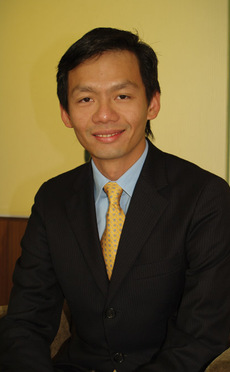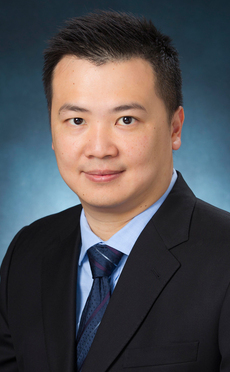
House of the Year, Asia ex-Japan: Credit Suisse
Asia Risk Awards 2016

In 2015 China's rich passed a symbolic milestone: there were more billionaires, with more money, from the East Asian nation than from the US, which has dominated the global list of the mega-wealthy for over a century. The Hurun Global Rich List 2016 estimated there are now 568 Chinese billionaires versus 535 for the US, while India takes third place with 111.
Not only has China nudged the US off the top of the most wealthy list, it has done so at breakneck speed: in 2012 Hurun listed just 83 billionaires in the country. The economic pendulum has therefore swung definitively eastward and provides the logic for Credit Suisse's decision last year to revamp its global organisation into five separate units: international wealth management, global markets, investment, the strategic resolution unit, and Asia-Pacific.
The Asia-Pacific unit is a combination of the Swiss lender's private and investment banks across the region in order to enable it to fully capitalise on the potential rewards that high-net-worth led growth brings for dealers. In fact it's an idea that makes so much sense you wonder why no other firm has done it previously. According to Helman Sitohang, chief executive of the new unit, the reason is simple: others can't.
"The Asia-Pacific model for Credit Suisse is unique. We have a top notch private banking franchise supported by a very strong investment banking platform. The two businesses collaborate and offer best-in-class products and solutions to our clients. Our focus is not on credit cards, or other types of business that don't necessarily fit into our model.
"I can definitely say that our geographical spread across Asia-Pacific is wide. With strong operations in Australia, South-east Asia, Japan, Korea, India and Greater China, I think that we are much more clearly balanced than other firms in the region."
The Swiss lender is no stranger to bold restructurings of its business. Starting in 2011 it totally revamped its global fixed income division in the face of crippling high capital costs – particularly from some long-dated Asia trades – from the latest iteration of the Basel reforms.
At the time of that earlier rebooting, fixed income stood for 55% of the bank's risk-weighted capital – and the firm is still looking to make capital efficiencies from its global business. The difference is now that as capital runs off it is being sent to the more productive side of the business: Asia-Pacific.
Those increased capital figures are substantial, and will increase over time according to Ken Pang, in charge of equity derivatives and fixed income at the bank and now heading its global markets solutions arm in Asia-Pacific. The group's second-quarter results report that risk-weighted assets (RWAs) at the Asia-Pacific division had increased from SFr27.9 billion to SFr31.6 billion ($28.2 billion-$31.9 billion) between just the first and second quarters. And Pang says this is only the beginning.
 Ken Pang
Ken Pang
"The Asia-Pacific division is a core focus for the bank. We have already seen a dramatic increase in capital allocation and we are expecting to grow RWAs 20% a year, every year, until 2018."
It's not just RWAs that Credit Suisse is expanding in Asia; it's ramping up headcount also. One obvious metric to demonstrate Credit Suisse's appetite for growth is the 100 additional relationship managers it has hired over the last 12 months, giving it a total of 650 in the division. Pang says the bank is aiming to employing another 150.
Expanding headcount is in contrast to the general trend of global banks continuing to retrench from Asia's markets: Goldmans slashing its headcount in Hong Kong, Barclays effectively shutting shop outside of Japan, while even committed players to the region such as BNP Paribas outsourced part of its equity business. So Credit Suisse's decision to put both manpower and money into the region stands out. And where it will focus this is clear.
"As a strategy we are highly focused on entrepreneurs. It's pretty obvious that when you run a business focused around a private and an investment bank these are the types of people that can give you both kinds of business. This is especially true for Asia given that a lot of companies are family owned," says Pang.
This combined strategy also has the advantage of fitting with the prevailing regulatory climate. The first stage of the uncleared margin rules came into play on September 1 and while the exact format of rules varies depending on a firm's home regulators, trades between entities of the same organisation become more complex. Margin will now be posted on a whole swathe of the over-the-counter derivatives market that previously escaped it.
The prevailing business model whereby Asian arms of global investment banks sell white-label products direct to private banks, and then book that risk in London or New York, looks under threat – or at least faces additional cost pressures.
"Private banks face a lot of new challenges; trading OTC products used to be just a simple back-to-back booking exercise with an IB and the end-client. Now with uncleared derivatives margining rules, counterparty risks and XVAs, it becomes a much more complex activity," says Brian Chan, co-head of solution sales and head of investment solutions, for Asia-Pacific.
 Brian Chan
Brian Chan
"All of a sudden they become a real trading desk with heavy risk management and infrastructure demands. A lot of private banks do not have these investment banking capabilities. Often they have a retail-style banking system that treats structured derivatives as a black-box entry and now they need to compute counterparty credit risk and margins on a line-by-line basis. That's not going to be easy."
Chan points out that even when private banks are affiliated to an investment bank, the trade is typically booked at their US or European headquarters. For the investment bank side of the business, this meant booking risk in London via Credit Suisse International. But not for much longer.
Two years ago Credit Suisse set up a booking hub in Singapore and starting this year it has begun a big programme to shift all its Asia risk-taking activity from London to the city-state within two years. The private bank has always operated out of the Singapore branch, meaning the combined Asia-Pacific entity is now integrated and using the same infrastructure.
The Credit Suisse team declined to comment on suggestions from Risk.net that UK regulators would welcome the trend of a reduction in 'remote-booked' risk activity into Credit Suisse International, a UK entity, from Asia. But Chan is keen to point out that local regulators appreciate the additional insight they now have from the local booking of Credit Suisse Asia-Pacific's risk.
"With our move to regional booking entities such as Singapore, our regulators can gain more comfort because client activities and risk are in closer proximity, within jurisdictions that they have access to and control over."
Not only does an integrated private and investment bank structure resolve some of the regulatory intra-affiliate and counterparty credit risk issues, it also makes it more practical to serve private bank customers, according to Chan. He gives the example of a private bank client with a large pot of assets in the Singapore branch.
"By having regional booking centres, certain client transactions become much easier. For example, clients with PB assets at our bank branch can easily use them as collateral in OTC trades with our risk books in the same entity. What used to be a complex credit papering exercise becomes straightforward, with the added benefit of the credit officer having much more familiarity with local market dynamics. And there are a lot of examples like that."
One clear example of how well Credit Suisse has integrated its investment and private bank is its Astrea III collateralised private equity securitisation that it structured alongside DBS for a wholly owned subsidiary of Temesek Holdings. Struck in June this year the $510 million deal reopened the Singaporean securitisation market, while also bringing some attractive assets to market.
The deal was initially brokered via the Credit Suisse's investment bank arm, through its relationship with Temesek. The equity/fund-linked derivative group structured the transaction and provided the liquidity facility, while the syndication desk placed the notes with institutional accounts and the private bank with high net worths. And at eight-times oversubscribed, planned futures issues look well placed.
There have been a number of marriages and divorces within fixed income and equity functions both regionally and locally but Pang says the end result in his business is different.
"It's not the first time that any house has done this combination. We believe the regional autonomy allows us to do this more aggressively. We are not just putting the people together; we want to have a single infrastructure and consistent processes. This is the only way to reduce complexity and our support cost. It's only in Asia-Pacific and with a smaller scope execution should be easier."
Only users who have a paid subscription or are part of a corporate subscription are able to print or copy content.
To access these options, along with all other subscription benefits, please contact info@risk.net or view our subscription options here: http://subscriptions.risk.net/subscribe
You are currently unable to print this content. Please contact info@risk.net to find out more.
You are currently unable to copy this content. Please contact info@risk.net to find out more.
Copyright Infopro Digital Limited. All rights reserved.
You may share this content using our article tools. Printing this content is for the sole use of the Authorised User (named subscriber), as outlined in our terms and conditions - https://www.infopro-insight.com/terms-conditions/insight-subscriptions/
If you would like to purchase additional rights please email info@risk.net
Copyright Infopro Digital Limited. All rights reserved.
You may share this content using our article tools. Copying this content is for the sole use of the Authorised User (named subscriber), as outlined in our terms and conditions - https://www.infopro-insight.com/terms-conditions/insight-subscriptions/
If you would like to purchase additional rights please email info@risk.net
More on Awards
Joining the dots: banks leverage tech advancements for the future of regulatory reporting
The continued evolution of regulatory frameworks is creating mounting challenges for capital markets firms in achieving comprehensive and cost-effectiveawa compliance reporting. Regnology discusses how firms are starting to use a synthesis of emerging…
Markets Technology Awards 2024 winners' review
Vendors spy opportunity in demystifying and democratising – opening up markets and methods to new users
Derivatives house of the year: JP Morgan
Risk Awards 2024: Response to regional banking crisis went far beyond First Republic
Risk Awards 2024: The winners
JP Morgan wins derivatives house, lifetime award for El Karoui, Barclays wins rates
Best product for capital markets: Murex
Asia Risk Awards 2023
Technology vendor of the year: Murex
Asia Risk Awards 2023
Best structured products support system: Murex
Asia Risk Awards 2023
Energy Risk Asia Awards 2023: the winners
Winning firms demonstrate resiliency and robust risk management amid testing times
Most read
- Top 10 operational risks for 2024
- Top 10 op risks: third parties stoke cyber risk
- Japanese megabanks shun internal models as FRTB bites








